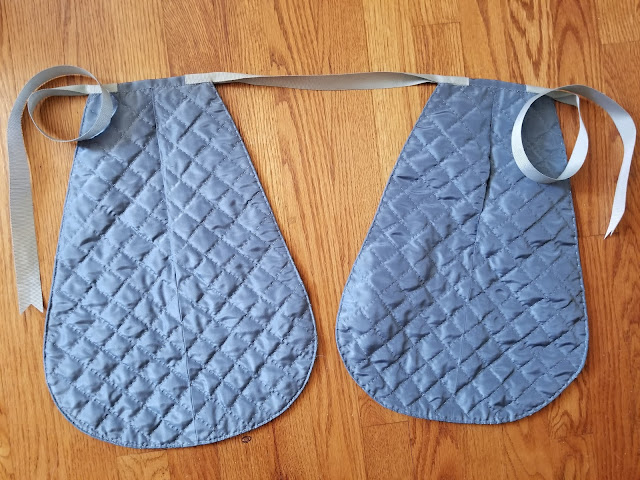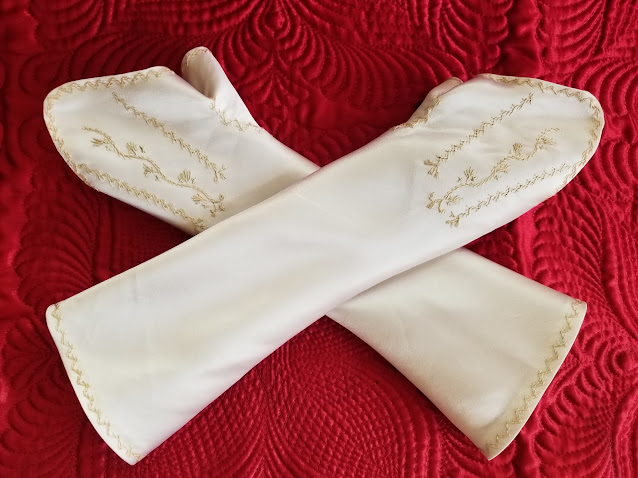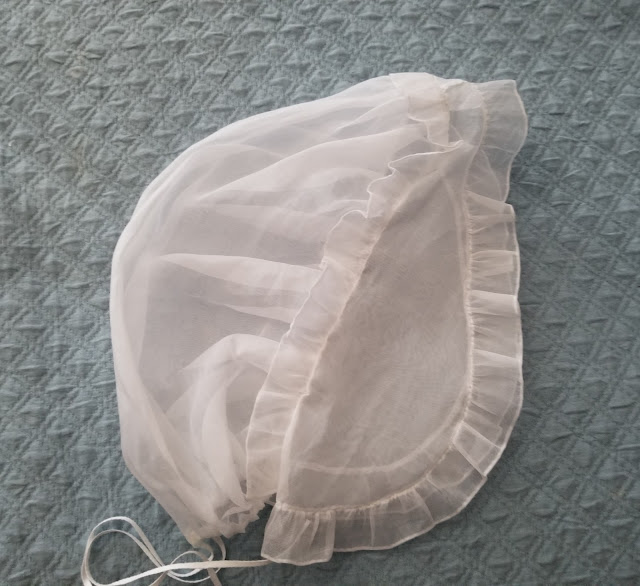Once again I've been studying 1920s corsets.
1920
1924
I felt a need to upgrade my 1920s shapewear that I wrote about in this post. As noted in that post I noted that the corselette was not right for my shape so I moved on to plan B. My 1922 catalog shows pages and pages of corsets, which look like a hybrid between an Edwardian corset and a modern girdle so I looked for extants to study the details and I discovered French corsets that were more like a girdle . Let's look at some extants.
All of these corsets are made from coutil and contain both back lacing and a hook and eye front side closure. The first one has the lacing and closure both in the front. They all appear to have fairly wide boning. The last example has narrower boning along the grommets in the back. All of them also have at least one elastic insert. The second example also looks like it extends above the waist. I also noticed that they seem to have wider boning in single rows instead of double rows of 1/4 inch boning as my Edwardian corset has.
I figured it would be pretty straightforward to reproduce one of these. I started out using the
Rilla Corset pattern from Scroop patterns due to the simple lines it has. Another plus with this pattern is that it has 2 sizing categories--one with a greater waist to hip ratio and one without. I figured it would be easier for me to get the shape right for my body. The object here is for more compression at the hips, control of my little tummy and little compression on my waist. I looked at the measurements and made a couple of adjustments on the paper pattern and drew in the lines for the bottom hem and lowering the top to be about 2 inches above the waist. I decided to use the last corset example above for my model.

After tracing the pieces onto pattern fitting cloth, it occurred to me that the front side seam was not in a good place for a closure so I pinned the front/front side pieces together and redrew the seam line--the example on the left being the original and the one on the right being the new pieces. I added a boning line to the right of the new seam line.
I cut out the pieces in a heavy poplin for fitting and it was pretty close. I needed to take in the seam allowance a tiny bit at the bottom 4 inches or so on the sides and back. I had enough coutil left from my corselette if I cut this cross grain but it was really close given the scraps I had left!
There's enough for the back facing but I decided to save this for the front under lap at the closure and to use plain white coutil for the back facings. Other materials needed: 1/2 inch German faux whalebone boning, 3/4 inch boning chanel, small hook and eye tape, 1/2 inch cotton twill tape, size 00 grommets and lacing.
Next steps: stitch seams, press hems, apply back facings, stitch boning channels by the grommet area, cover seams with boning channel tape. I also cut the elastic insert. I didn't photograph these steps. Here is the corset with the boning channel tape pinned over the seam lines and the elastic insert pinned in.
Inside of corset with tape and elastic pinned in place.
Outside of corset with boning tape and elastic insert pinned in place:
Next steps: Insert grommets, finish front closure, finish bottom hem. The idea here is to leave the top hem open to be able to insert the boning. I need to be able to try the corset on to determine how long the front boning pieces need to be in order to be able to sit comfortably.
Grommets set:
Seams, boning channels, bottom hem taped and sewn and front closure completed. Boning along both sides of lacing in place:
Next step: try on and mark the length of front boning, put boning in, hem the top and make the suspenders. After marking how long the boning should be, I had to stitch a line in each boning channel since most of them run the full length of each seam.
I used 3/4 inch satin bra strap elastic for the suspenders with vintage style sliders and grips. I also decided to go with six suspenders which I prefer to four.
It probably would've been better to sew these on before binding the bottom hem but I simply didn't think of it!
Here is the finished corset closed and open
Front:
Back:
Here it is open
Outside:
I'm very pleased with the way this turned out. It fit perfectly and having it extend a bit above the waist eliminates muffin top. This was the piece I needed.
I'm sure glad to get this one finished!
Here it is over my envelope chemise.
























































